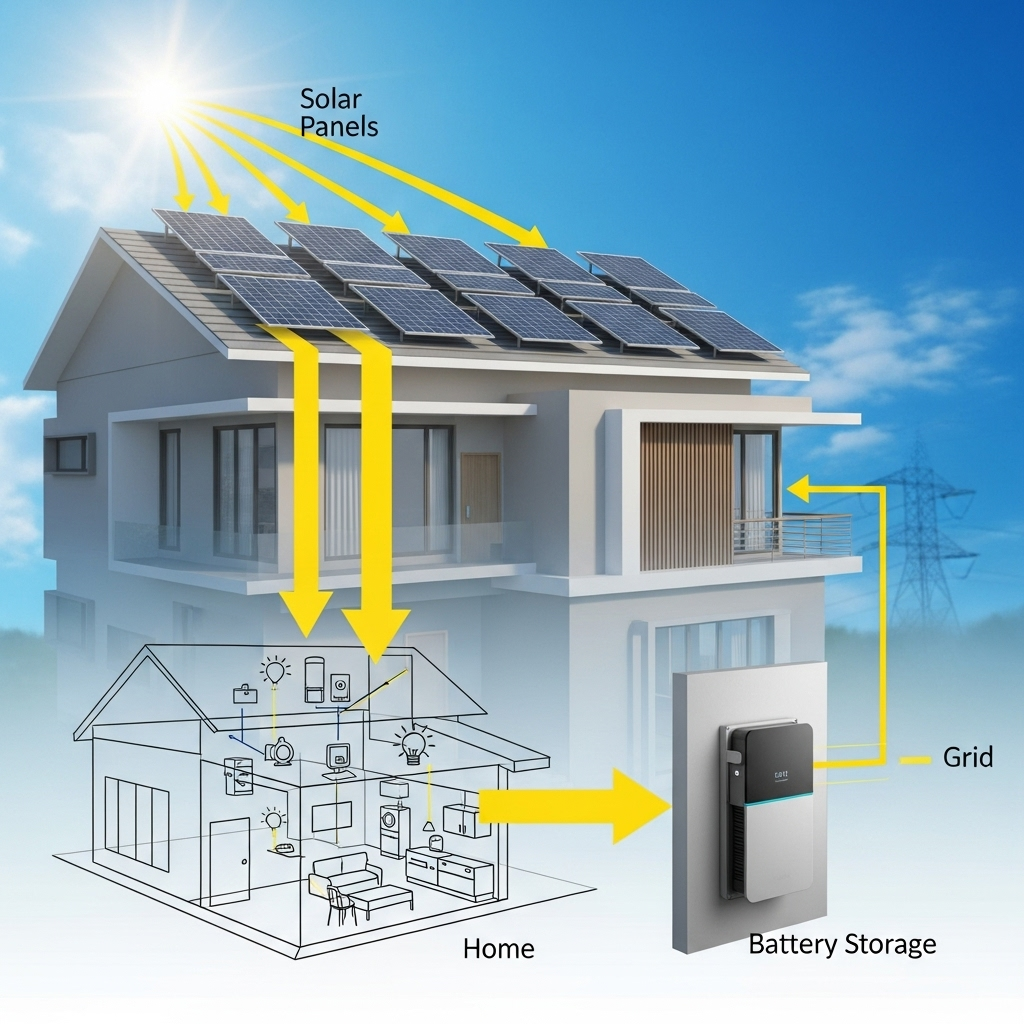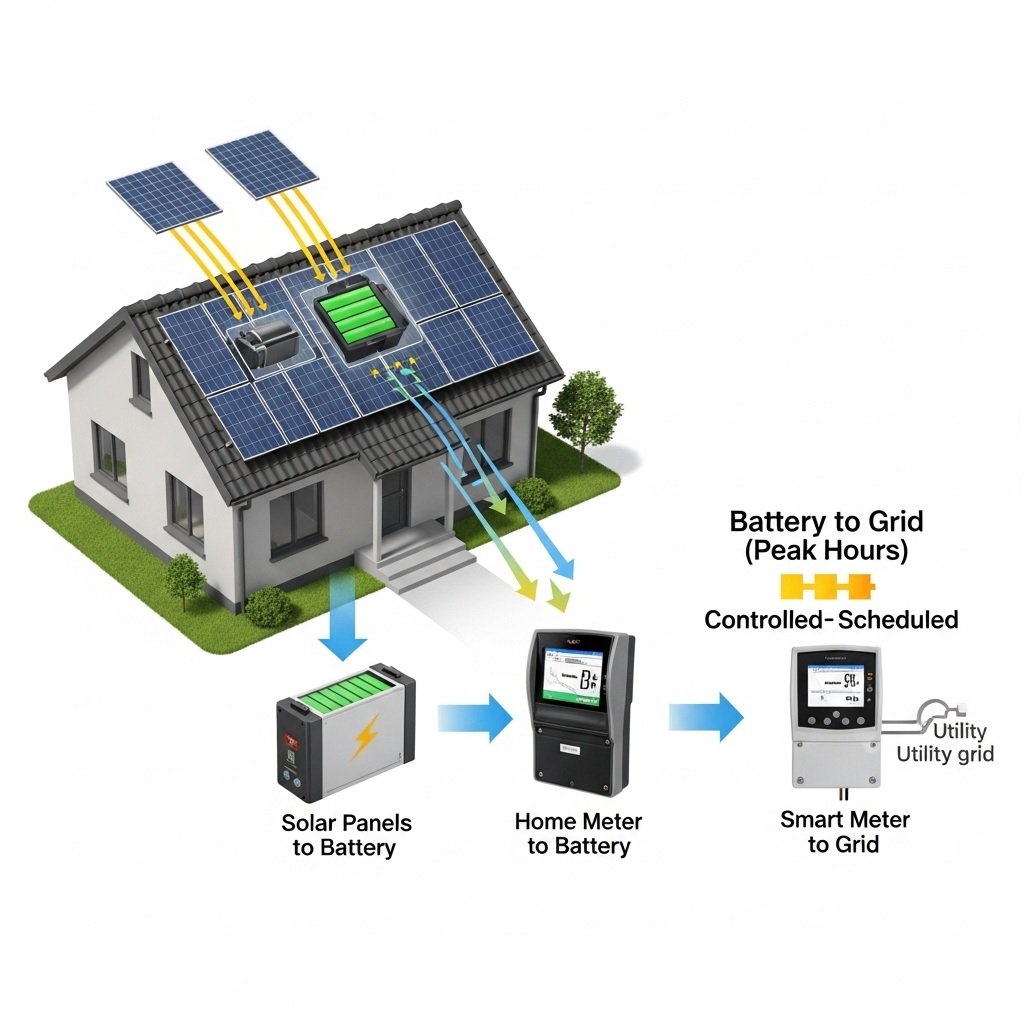In our analysis of distributed energy resources (DERs), we see a critical shift occurring. Rooftop solar is evolving from a simple generator of household energy into an active participant in grid stability. At the center of this evolution is a technical capability that is increasingly becoming a major factor in project viability: Fault Ride-Through (FRT). While it sounds complex, understanding FRT is essential for any installer or developer looking to navigate modern interconnection standards and avoid costly project delays.
What is Fault Ride-Through (FRT) from a Market Perspective?
FRT addresses a fundamental business risk: grid instability. Grid faults—brief voltage sags or swells often lasting milliseconds—are common. The core question for grid operators is what happens when thousands of rooftop solar systems experience one simultaneously.
The Core Function of FRT in a Smart Inverter
Fault Ride-Through is the mandated ability of a solar inverter to remain connected and operational during these minor grid disturbances. Historically, inverters were designed to disconnect instantly as a safety measure. In our view, this old approach is now a liability. A mass disconnection of solar generation, even for a moment, could amplify a minor fault into a significant outage. FRT turns the inverter from a passive component into an active grid asset by instructing it to "ride through" the event, supporting the grid when it's most needed.
Why Regulators Are Making FRT Mandatory
The push for FRT is driven by the sheer success of solar. As rooftop PV penetration grows, its collective impact on the grid is no longer negligible. A real-world case that caught the industry's attention involved a German grid code that, if left un-updated, could have led to mass solar disconnections and threatened system security. As the IEA highlights in its energy transformation report, integrating variable renewables securely requires new technical capabilities. FRT is arguably one of the most important of these new rules.
The Evolution of Interconnection: From Simple Safety to Active Support
The grid connection standards for rooftop solar have undergone a rapid and necessary evolution, driven by technology and the physics of the grid.
The Rise of Smart Inverters as Grid Assets
The transition to mandatory FRT was enabled by the development of smart inverters. These devices are more than just power converters; they are sophisticated grid-management tools. Their ability to provide grid support functions like FRT, voltage support, and frequency response is now central to how modern grids are designed to operate. This makes the inverter one of the most critical components for ensuring a project meets today's rigorous interconnection requirements.
LVRT vs. HVRT: What Developers Need to Know
FRT requirements are typically broken down into two main categories:
- Low Voltage Ride-Through (LVRT): The ability to withstand temporary drops in grid voltage. This is the most common requirement for distributed solar.
- High Voltage Ride-Through (HVRT): The ability to withstand temporary spikes in voltage.
According to a comprehensive 2022 report from IRENA on Grid Codes for Renewable Powered Systems, LVRT is now standard even for small-scale systems, while HVRT is becoming more common as DER penetration deepens. For developers, this means specifying inverters that meet both requirements is the safest path to future-proofing a project.
The Business Impact of FRT Compliance
From our analysis, FRT is not just a technical line item. It directly impacts project timelines, costs, and overall bankability.
Compliance is Key to Avoiding Project Delays
The single biggest impact of FRT rules is on the interconnection process. Utilities will not grant Permission to Operate (PTO) to a system with a non-compliant inverter. Attempting to use older or uncertified equipment is a surefire way to get stuck in the interconnection queue, leading to costly delays. The "soft costs" associated with permitting and interconnection are already a significant hurdle. As the U.S. Department of Energy has noted, navigating the thousands of different utility rules for connecting solar to the grid is a major challenge. Ensuring FRT compliance from the outset is a critical risk mitigation strategy.
The Synergy with Energy Storage
Pairing solar with an energy storage system (ESS) creates an even more valuable grid asset. While the FRT-capable inverter ensures grid connectivity during a fault, the battery can provide backup power and deliver more advanced grid services. This synergy not only enhances homeowner resilience but also opens up new revenue stream opportunities in markets that compensate DERs for grid support.
Navigating Regional Rule Variations
It is crucial to note that FRT requirements are not nationally uniform. They vary significantly between countries, states, and even neighboring utility territories. An installer must verify the specific technical requirements in the local utility's interconnection handbook before finalizing equipment selection.
Comparison: Legacy vs. Modern Smart Inverters
The operational difference in response to a grid fault is stark and highlights why regulators have forced this change.
| Feature | Legacy Inverter (Pre-FRT) | Modern Smart Inverter (With FRT) |
|---|---|---|
| Response to Voltage Sag | Immediately disconnects. | Stays connected for a specified duration to support the grid. |
| Grid Impact | Contributes to instability risk (cascading failure). | Actively helps stabilize the grid. |
| Project Approval | Will not pass modern interconnection standards. | Compliant with current rules (e.g., IEEE 1547-2018). |
| Function | Passive power generator. | Active grid support asset. |
Disclaimer: This analysis is for informational purposes and does not constitute professional engineering or investment advice. Always consult a qualified professional for project-specific guidance.
Conclusion: Rooftop Solar's Role in a Resilient Grid
In conclusion, our analysis shows that Fault Ride-Through is much more than a technical specification. It marks the maturation of rooftop solar as an indispensable part of the energy infrastructure. For developers and installers, embracing FRT-compliant smart inverters is not just about meeting a rule; it's about ensuring project viability, reducing financial risk, and contributing to a more resilient and reliable grid for everyone.





Leave a comment
All comments are moderated before being published.
This site is protected by hCaptcha and the hCaptcha Privacy Policy and Terms of Service apply.